-
Water sector ready for investment, technological innovation
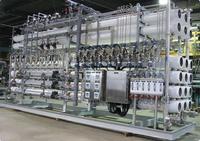
Investors looking for promising growth markets would do well to consider their water bill. Water’s artificially low price in most of the United States is one factor holding back innovative new water technologies, according to the report – but the time is right for change. Across the West, drought has left wide swaths of agricultural land brown, with massive wildfires raging through tinder-dry forests, residential wells tapped out and unemployed farm workers crowding food pantries. The drought is projected to cost the agricultural sector about $2.2 billion in 2014. The social and ecological damage is also profound. Technological innovation in the water sector could bring a raft of benefits ranging from the conservation of scarce water supplies to the expansion of water supplies through technologies that recycle or desalinate, for example.
-
-
Wi-Fi signals enable through-wall detection
Engineers prove the concept that local Wi-Fi signals can be used to monitor moving objects and bodies that are otherwise visually obscured. Although fundamentally similar to traditional radar systems, their novel approach is entirely passive — utilizing the wireless signals that already swamp our urban airways. This technology has a wide range of applications from healthcare monitoring, security and emergency disaster relief, to finding earthquake survivors in fallen buildings.
-
-
Porous molecules bind greenhouse gases
While carbon dioxide presents the biggest greenhouse problem, several other compounds are hundreds or thousands of times more potent in their greenhouse effect per unit of mass. These compounds include Freons, used as common refrigerants, and fluorocarbons, highly stable organic compounds in which one or more hydrogen atoms have been replaced with fluorine. Chemistry researchers have developed a molecule that assembles spontaneously into a lightweight structure with microscopic pores capable of binding large quantities of several potent greenhouse gases.
-
-
New app turns smartphones into sensors for an earthquake early-warning system
The MyShake app, still in test mode, uses smartphone accelerometers and locators to augment the data on incoming quakes issued by the 400 seismometers which are part of California’s ShakeAlert program.Registered phones act as additional earthquake sensors, as the app runs an algorithm which detects when the phone is still or shaking. Should several registered phones in the same area begin to shake at the same time, an earthquake alert is issued.
-
-
Autonomous weapons which select, destroy targets without human intervention proliferate
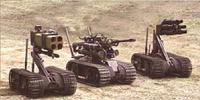
More scientists are expressing concern over autonomous weapons which are able to select and destroy targets without human control or oversight. Armed drones can be operated by remote pilots, but weapons of the future will rely more on artificial intelligence to decide what to target and whom to kill.
-
-
Gas can be a “bridge fuel” to a low-carbon future
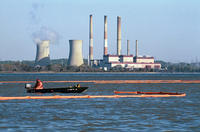
Major new suggests that gas could play an important role as a “bridging fuel” to a low-carbon economy, but warns that it will not be long before gas becomes part of the problem rather than the solution. The research combines the latest energy system modelling techniques with analysis of U.K. gas security to assess future demand.
-
-
Study ties conflict risk in sub-Saharan Africa to climate change, socioeconomics, geography
A massive new study indicates there is a statistical link between hotter temperatures generated by climate change and the risk of armed conflicts in sub-Saharan Africa. A research team assessed more than 78,000 armed conflicts between 1980 and 2012 in the Sahel region of Africa — a semi-arid belt just south of the Saharan Desert that spans about 3,000 miles and more than a dozen countries from the Atlantic to the Indian oceans. The team was looking for links between armed conflicts and temperature and rainfall anomalies, as well as assessing other causes of violence in the Sahel.
-
-
Energy engineers call for new, less restrictive regulatory framework for fracking
Leading energy engineers are suggesting that U.K. regulations on the surface vibrations caused by shale gas fracking are unnecessarily restrictive. The engineers state in a new paper that widely applying restrictions similar to those currently in force on fracking would require a ban on heavy vehicles from passing houses or walking on wooden floors. They also state that the threat of serious earthquakes caused by fracking activity is considerably lower than commonly feared.
-
-
New technology reduces cost to capture carbon
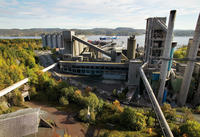
The U.S. Department of Energy’s Savannah River National Laboratory (SRNL) has signed an Exclusive Rights Agreement with Partnering in Innovation, Inc. of Orlando, Florida, in support of new carbon capture technology. Originally developed at SRNL, this approach will help open global markets for cost-effective industrial carbon dioxide (CO2) capture and re-use.
-
-
Sea level rise threatens California coastal infrastructure
Officials in Humboldt County, California are preparing for sea level rise, which experts say could threaten utilities and U.S. highway 101. The National Research Councilwarns that California, Oregon, and Washington could experience twelve inches of sea level rise by 2050 and thirty-six inches by 2100. Sea level on Humboldt Bay has increased by eighteen inches over the past century due to increasing tide elevation and subsidence. Gas, electrical, and water transmission lines are all buried in the farmlands behind dikes that fortify the shoreline.
-
-
Generating fuel from sunlight
Researchers have made significant progress towards developing a process of Artificial Photosynthesis (AP) that could replace the use of fossil fuels in the future. AP is the industrial process of preparing fuels and chemicals from nothing more than carbon dioxide, water and sunlight. It is a vital process that would be the foundation of a world that would no longer need fossil fuels.
-
-
Boeing completes testing of new anti-jamming technology
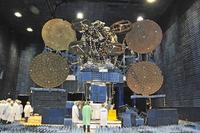
Boeing says it has proven its new anti-jamming communications technology is capable of operating as either a ground-based user terminal or satellite-based networking hub, enabling the military to send and receive secure communications at a significantly lower cost by using existing terminals and satellites.
-
-
As drought continues, more Californians turn to greywater
California’s rainy season tends to run from October to late March, but for the third year in a row rain has been relatively absent, meaning that the state is currently suffering from a severe, unprecedented drought. With increasing water rates, a growing number of homeowners in Southern California are relying on greywater systems to support their landscapes and toilet flushing. “If the drought continues, honestly, I could see all new construction will have greywater systems of some kind because it really doesn’t make sense to put usable water in the sewer system,” says one expert.
-
-
Cockroach cyborgs use microphones to detect, trace sounds in collapsed buildings
Researchers have developed technology that allows cyborg cockroaches, or biobots, to pick up sounds with small microphones and seek out the source of the sound. The technology is designed to help emergency personnel find and rescue survivors in the aftermath of a disaster. The researchers have also developed technology that can be used as an “invisible fence” to keep the biobots in the disaster area. “In a collapsed building, sound is the best way to find survivors,” says one of the researchers.
-
-
Schools review lockdown protocols for active shooter scenarios
Schools across the country are reviewing their lockdown protocols for active shooter scenarios. In Santa Fe, New Mexico, Ortiz Middle School is encouraging educators to not only gather students within their care to safety, but if necessary to fight off an attacker if the situation permits. On 9 October, school principal Steve Baca ordered a lockdown after a security guard discovered a gun in a student’s backpack. Immediately, English teacher Alexandra Robertson locked students in her classroom, got them to help barricade the door, and she was prepared to use any object including books and chairs to fed off anyone who might try to enter the classroom.
-
More headlines
The long view
A Shining Star in a Contentious Legacy: Could Marty Makary Be the Saving Grace of a Divisive Presidency?
While much of the Trump administration has sparked controversy, the FDA’s consumer-first reforms may be remembered as its brightest legacy. From AI-driven drug reviews to bans on artificial dyes, the FDA’s agenda resonates with the public in ways few Trump-era policies have.
Risk Assessment with Machine Learning
Researchers utilize geological survey data and machine learning algorithms for accurately predicting liquefaction risk in earthquake-prone areas.
Foundation for U.S. Breakthroughs Feels Shakier to Researchers
With each dollar of its grants, the National Institutes of Health —the world’s largest funder of biomedical research —generates, on average, $2.56 worth of economic activity across all 50 states. NIH grants also support more than 400,000 U.S. jobs, and have been a central force in establishing the country’s dominance in medical research. Waves of funding cuts and grant terminations under the second Trump administration are a threat to the U.S. status as driver of scientific progress, and to the nation’s economy.
The True Cost of Abandoning Science
“We now face a choice: to remain at the vanguard of scientific inquiry through sound investment, or to cede our leadership and watch others answer the big questions that have confounded humanity for millennia —and reap the rewards.”
Bookshelf: Smartphones Shape War in Hyperconnected World
The smartphone is helping to shape the conduct and representation of contemporary war. A new book argues that as an operative device, the smartphone is now “being used as a central weapon of war.”
New Approach Detects Adversarial Attacks in Multimodal AI Systems
New vulnerabilities have emerged with the rapid advancement and adoption of multimodal foundational AI models, significantly expanding the potential for cybersecurity attacks. Topological signatures key to revealing attacks, identifying origins of threats.
